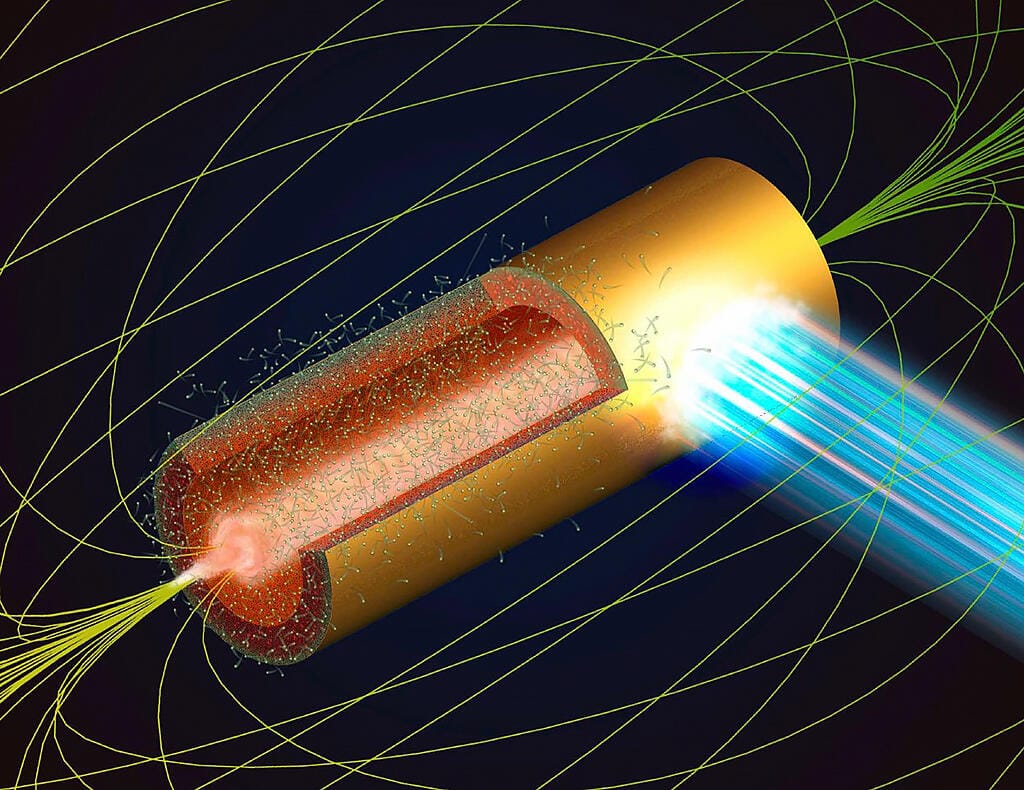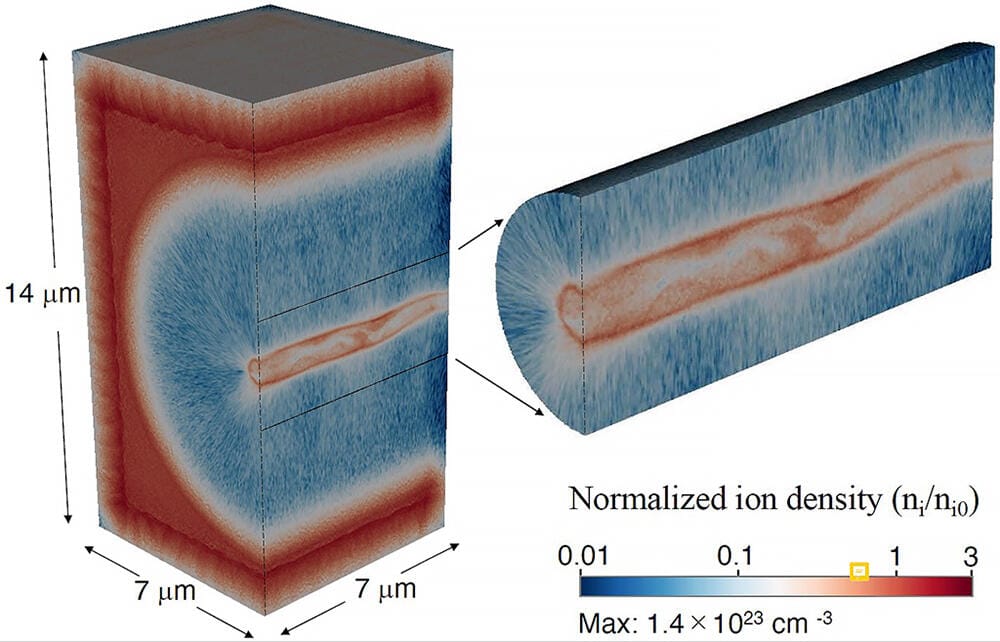Laser Blade Implosion - Megatesla Fields
Researchers at The University of Osaka have developed a novel method for generating ultrahigh magnetic fields via laser-driven implosions of blade-structured microtubes. This method achieves field strengths approaching one megatesla—a breakthrough in compact, high-field plasma science.
Ultrastrong magnetic fields approaching the megatesla regime—comparable to those found near strongly magnetized neutron stars or astrophysical jets—have now been demonstrated in theory using a compact, laser-driven setup. A team led by Professor Masakatsu Murakami at The University of Osaka has proposed and simulated a unique scheme that uses micron-sized hollow cylinders with internal blades to achieve these field levels.
The technique—called bladed microtube implosion (BMI)—relies on directing ultra-intense, femtosecond laser pulses at a cylindrical target with sawtooth-like inner blades. These blades cause the imploding plasma to swirl asymmetrically, generating circulating currents near the center. The resulting loop current self-consistently produces an intense axial magnetic field exceeding 500 kilotesla, approaching the megatesla regime. No externally applied seed field is required.

This mechanism stands in stark contrast to traditional magnetic compression, which relies on amplifying an initial magnetic field. In BMI, the field is generated from scratch—driven purely by laser-plasma interactions. Moreover, as long as the target incorporates structures that break cylindrical symmetry, high magnetic fields can still be robustly generated. The process forms a feedback loop in which flows of charged particles—composed of ions and electrons—strengthen the magnetic field, which in turn confines those flows more tightly, further amplifying the field.
“This approach offers a powerful new way to create and study extreme magnetic fields in a compact format. It provides an experimental bridge between laboratory plasmas and the astrophysical universe.” - Masakatsu Murakami

Potential applications include:
- Laboratory astrophysics: mimicking magnetized jets and stellar interiors
- Laser fusion: advancing proton-beam fast ignition schemes
- High-field QED: probing non-linear quantum phenomena
Simulations were conducted using the fully relativistic EPOCH code on the SQUID supercomputer at The University of Osaka. A supporting analytic model was also constructed to reveal the fundamental scaling laws and target optimization strategies.
